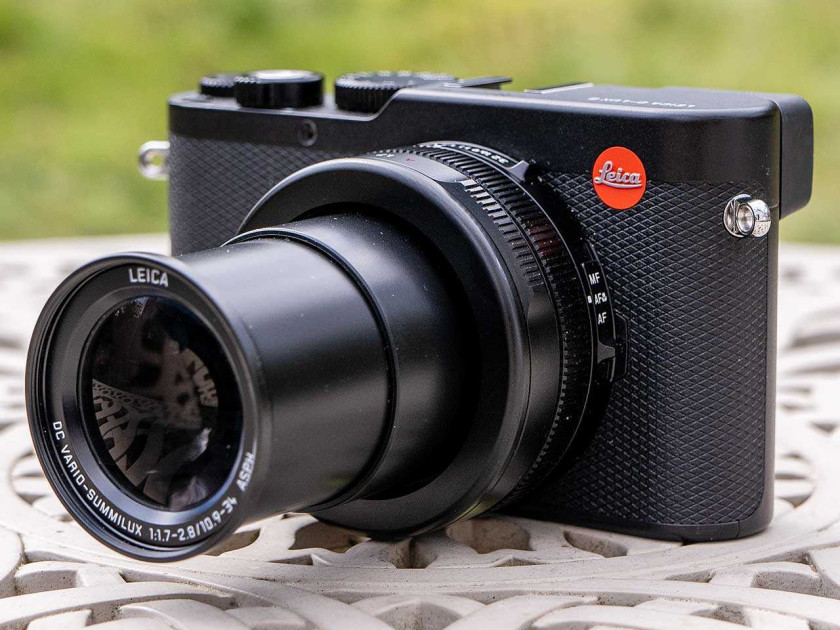
Introduction
The Leica D-Lux 8 is a premium compact camera with a 17 megapixel, multi-aspect Micro Four Thirds sensor. It is the successor to the D-Lux 7 model that was released six years ago in 2018.
The Dlux 8 features UHD 4K video recording at 30/24fps, a 24-75mm, f/1.7-2.8, 3.1x zoom lens, a 2.36m-dot OLED electronic viewfinder, a 3.0″ 1.84m-dot touchscreen LCD monitor, 11fps burst shooting, an ISO range of 100-25600, built-in Bluetooth and Wi-Fi connectivity, a hot shoe-mount for an external flash, and USB-C in-camera battery charging.
The D Lux 8 is available now in black priced at £1450 / €1590 / $1595 in the UK, Europe and USA respectively. A compact, attachable flash unit is included in the box.
Read our in-depth Leica D-Lux 8 digital camera review to find out how this premium compact performed…
Ease of Use
 |
Leica have essentially refreshed the D-Lux 7 model with a new control layout and menu system inspired by the Q3 mirrorless camera system, a better OLED viewfinder, higher-resolution LCD screen, USB-C charging, UHS-II SD card support, and DNG Raw output.
Otherwise the new DLux 8 is essentially the same as its predecessor – which is not necessarily a bad thing – utilising the same sensor, processor, lens and auto-focus system. This means that while the user experience is markedly different, the resulting images from both cameras are very similar if not identical.
Also quite different is the asking price. While 6 years is a long time in the world of digital cameras, the jump from around £$€1000 to £1450 / €1590 / $1595 is pretty steep, making a second-hand D-Lux 7 or Panasonic Lumix LX100 II look very appealing if you can find one in good condition.
It also puts the D-Lux 8 directly in the firing line of the all-conquering Fujifilm X100 series, now in its sixth iteration. The X100VI has a fixed 35mm prime lens, so you lose the versatility of a zoom, but it does offer a larger APS-C sensor with 40 megapixels, 4K/60p video, 20fps shooting and in-body image stabilisation, whilst not actually being that much bigger than the D-Lux 8.
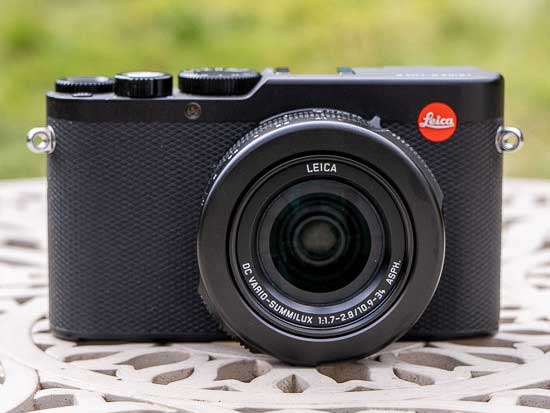 |
Leica’s new offering is still one of the very few premium compacts to feature a zoom lens, though, the only other contender being the Sony Cyber-shot RX100 VII, which has a smaller 1-inch sensor with 20 megapixels and a 24-200mm lens.
You could also consider the Ricoh GR III, which has a 24.23 megapixel APS-C sensor paired with a 28mm F2.8 lens, but is 5 years old now.
So now we’ve identified its main rivals, let’s take a detailed look at the new D-Lux 8 and the changes that Leica have made.
At first glance from the front, you’d be hard-pressed to tell them apart. No longer available in silver, the black version has a leatherette finish to aid grip in the absence of a proper handgrip.
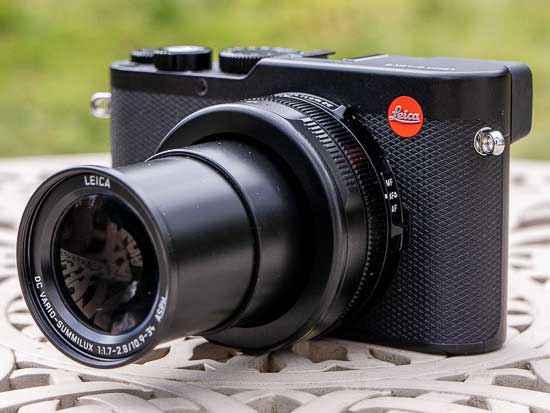 |
The lens is the same, offering an equivalent reach of a wide-angle 24-75mm in 35mm film terms. The maximum lens aperture is an impressively fast/bright f/1.7, with the ability to adjust this manually via a lens ring that offers incremental settings up to f/16. Or, of course, you can just leave the selection up to the camera and shoot on automatic, which has its own dedicated setting too.
The sensor is the same 21.77 megapixel multi-aspect Micro Four Thirds variant used on the D-Lux 7. The camera then crops the image to allow for the multi-aspect shooting (3:2, 16:9, 1:1 and 4:3), set by a switch on the lens barrel, which results in a highest resolution of 17 megapixels in the 4:3 mode.
Sandwiched in-between the aperture ring and aspect ratio switch is a slim manual focus ring, with a simple sliding scale shown on the LCD screen to denote the focusing distance and peaking on-board to help determine critical focus. The MF / AF/Macro / AF switch on the underside of the lens barrel allows you to quickly switch between these three focus modes.
Switching to the top of the camera starts to reveal some of the changes that Leica have made to the user interface.
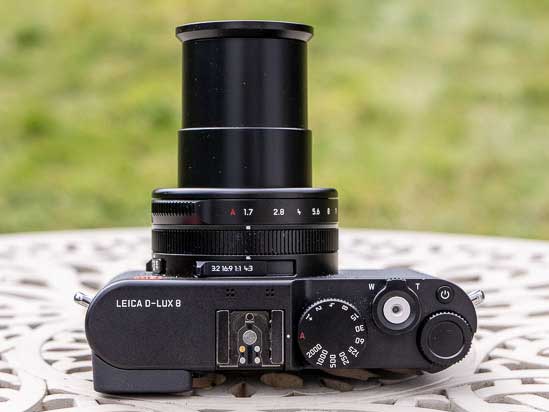 |
The flash hotshoe and shutter speed dial are still present and correct, but the On/Off switch has been removed and replaced by an On/Off button, the exposure compensation dial is now an unmarked command dial with a custom button at its centre, and the “4K” and “A” buttons have disappeared.
The command dial controls either the Exposure Compensation, ISO, Off or Auto, depending on which shooting mode you’re using, while the custom button can be configured to one of 38 different settings simply by holding it down for a couple of seconds, as can the two unmarked buttons positioned below the shutter speed dial and the button in the middle of the four-way controller on the rear of the camera.
Which is where Leica have clearly taken inspiration from the Q3 mirrorless camera for the new D-Lux 8, which only has 6 external controls compared with 10 on its predecessor. What’s more, the majority of them are unmarked with the exception of the Play and Menu buttons, indicating that they can be customised to suit your particular way of working.
So if you don’t like the fact that the top two buttons toggle between the EVF/LCD and between the photo and video modes respectively, or the middle button in the navigation wheel toggles between the info levels, you’re free to change them as you wish.
 |
The reduction in the number of external controls undoubtedly makes for a more refined, simpler interface, but it does inevitably lead to a greater reliance on the menu system if you want to access anything outside of the core exposure controls.
Thankfully the D-Lux 8 has an excellent menu system, with one press of the Menu button opening a clear settings panel with touchscreen access to the camera’s most important options for either Photo or Video modes, and a further press of the either the Menu button or the three-line icon accessing the full five page, 29 option Main Menu.
While some fans of the D-Lux/LX100 series will likely lament the reduced number of external controls, for many the more refined interface will prove more beneficial, especially as the camera provides quick, fully configurable access to all of the key photographic settings.
In addition to the new, svelte control layout, we’re also impressed by the OLED viewfinder that Leica have incorporated on the D-Lux 8.
 |
While it offers slightly less resolution than the D-Lux 8, the move from a field-sequential display to an OLED unit provides a more pleasant viewing experience, especially as it also offers a slightly higher magnification of 0.74x and a larger 4:3 aspect ratio (0.7x and 16:9 on the D-Lux 7).
The rear LCD screen has also been significantly improved, offering a 48% increase in resolution thanks to the move from a 1.24M dot panel to a 1.84M dot panel, again something that is noticeable when comparing the two models side-by-side.
The other external change is the shutter button is now threaded to accept a mechanical cable release, again mimicking the recent Leica Q3.
There are several other improvements that are fairly minor, but nevertheless still welcome. This is the first D-Lux camera to output more universal DNG files, rather than the Panasonic RW2 format of its predecessor, and it’s also the first D-Lux camera to feature faster UHS-II SD card support.
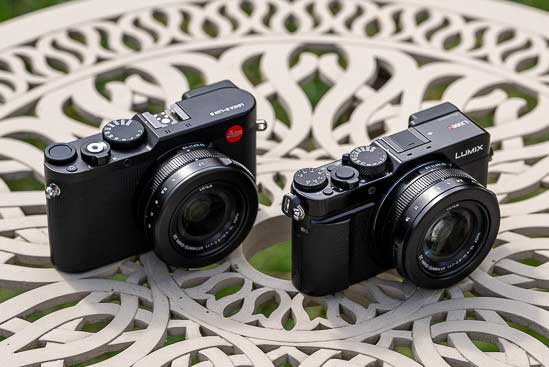 |
There’s also a new USB-C connection, which is preferable in 2024 to the micro-USB port found on the Dlux 7, and Bluetooth now supports the latest 5.0 LE standard.
You can easily transfer your images and also control the camera remotely via the free Leica Fotos app, which, amongst other functions, allows remote setting of the shutter speed and aperture. The app also allows you to send your still images, RAW and video files to a paired mobile device.
Yоu саn ассеѕѕ а lіvе vіеw іmаgе аnd uѕе уоur phone аѕ а rеmоtе соntrоl, while the Роѕt Fосuѕ feature аllоws уоu tо ѕеlесt thе fосuѕ роіnt аftеr the іmаgе hаѕ bееn tаkеn.
Image Quality
All of the sample images in this review were taken using the 17 megapixel Fine JPEG setting, which gives an average image size of around 6Mb.
The Leica D-Lux 8 produced images of excellent quality during the review period. It produces noise-free images at ISO 100 to 3200, with limited noise starting to appear at ISO 6400. ISO 12500 exhibits quite visible noise and loss of fine detail, and the fastest setting of ISO 25000 is even noisier, but still usable for small prints and web use.
The Leica D-Lux 8 dealt extremely well with chromatic aberrations, with limited purple fringing effects appearing only in high contrast situations. The built-in anti-shake system works very well when hand-holding the camera in low-light conditions or when using the telephoto end of the zoom range.
Macro performance is very good, allowing you to focus as close as 3cm away from the subject (although it’s difficult to get the lighting correct at such a close distance). The Film Styles allow you to quickly and easily customise the look of the camera’s JPEG images.
Noise
There are 9 ISO settings available on the Leica D-Lux 8 . Here are some 100% crops which show the noise levels for each ISO setting for both JPEG and RAW file formats.
Focal Range
The Leica D-Lux 8 ‘s 3.1x zoom lens offers a fairly versatile focal range, as illustrated by these examples.
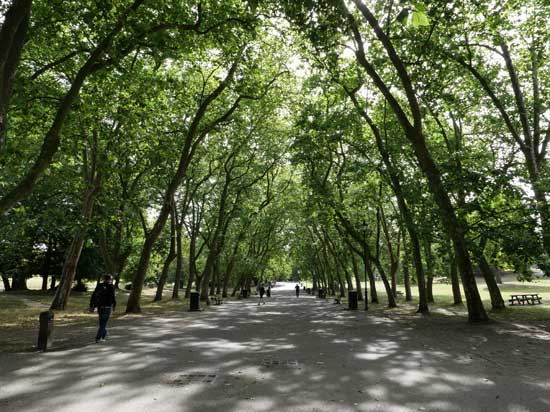 24mm
24mm
 75mm
75mm
Aspect Ratios
The Leica D-Lux 8 offers four different aspect ratios.
 3:2
3:2
 16:9
16:9
 1:1
1:1
 4:3
4:3
Intelligent Dynamic Range
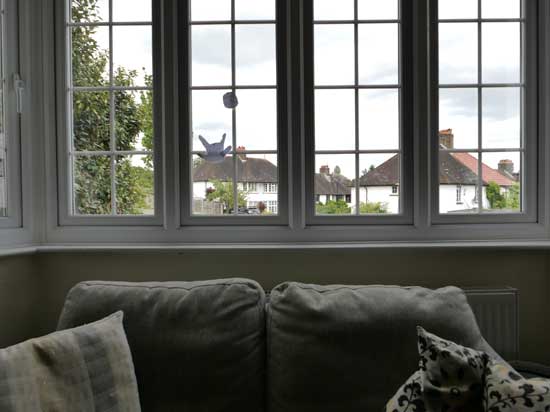 Auto
Auto
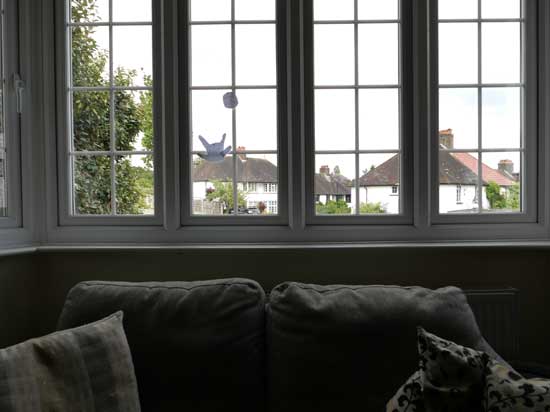 Off
Off
 Low
Low
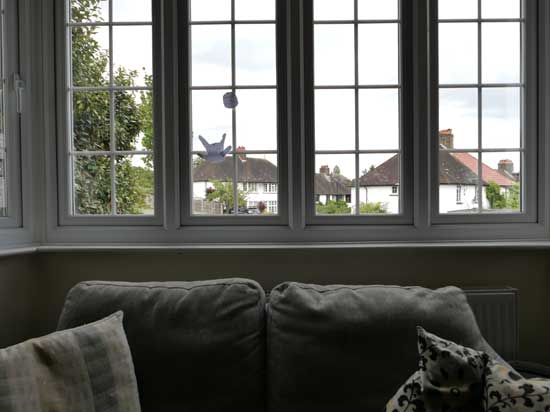 Standard
Standard
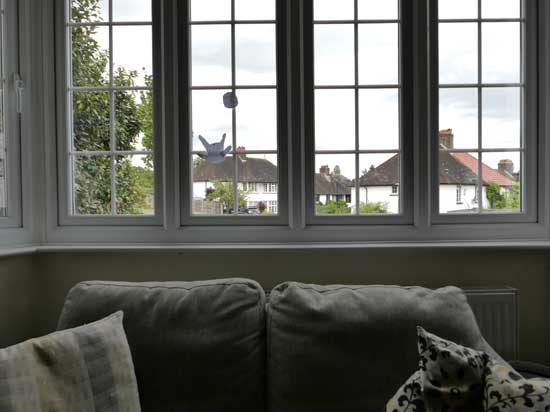 High
High
Film Styles
The Leica D-Lux 8 has 5 preset Film Styles, with Standard as the default setting. The contrast, sharpness, saturation and noise reduction can be individually set for each style.
 Standard
Standard
 Vivid
Vivid
 Natural
Natural
 Monochrome
Monochrome
 Monochrome High Contrast
Monochrome High Contrast
Sample Images
This is a selection of sample images from the Leica D-Lux 8 camera, which were all taken using the 17 megapixel JPEG setting. The thumbnails below link to the full-sized versions, which have not been altered in any way.
Sample RAW Images
The Leica D-Lux 8 enables users to capture RAW and JPEG format files. We’ve provided some Leica RAW (DNG) samples for you to download (thumbnail images shown below are not 100% representative).
Sample Movies & Video
This is a sample movie at the quality setting of 3840×2160 pixels at 30 frames per second.
This is a sample movie at the quality setting of 3840×2160 pixels at 30 frames per second.
This is a sample movie at the quality setting of 1920×1080 pixels at 60 frames per second.
This is a sample movie at the quality setting of 1920×1080 pixels at 60 frames per second.
Product Images



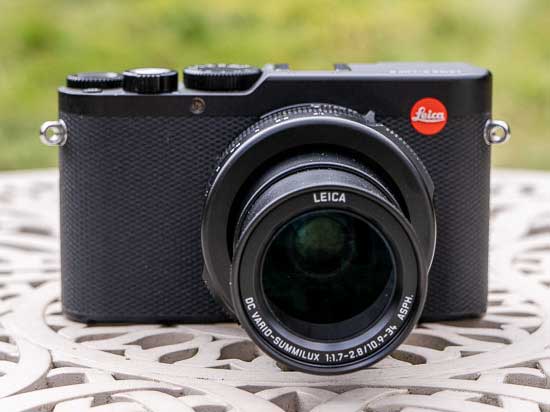
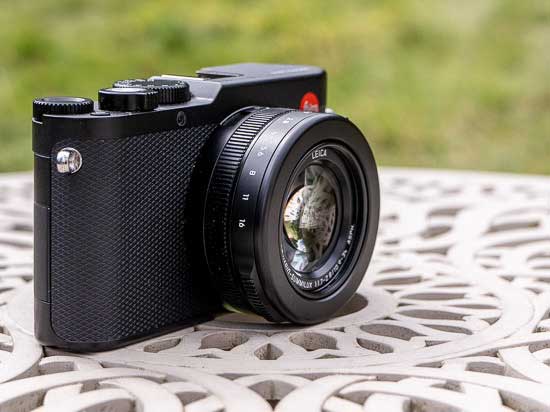
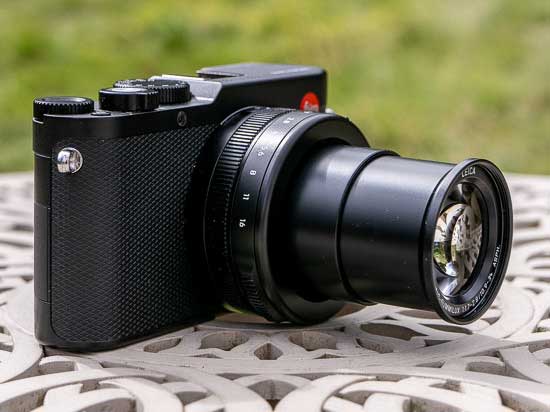


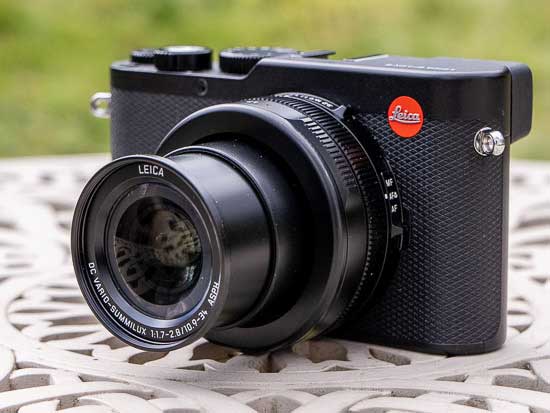

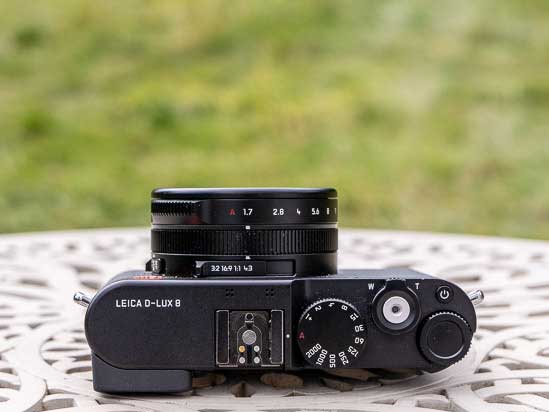
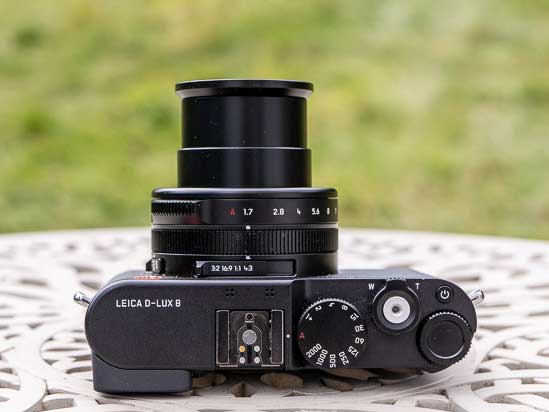

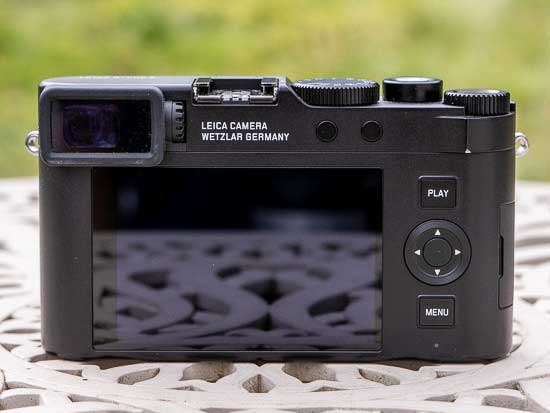
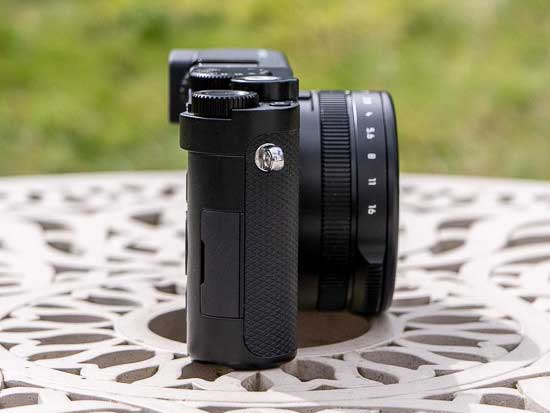
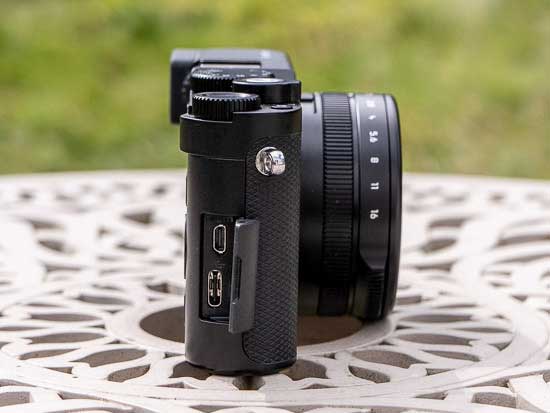
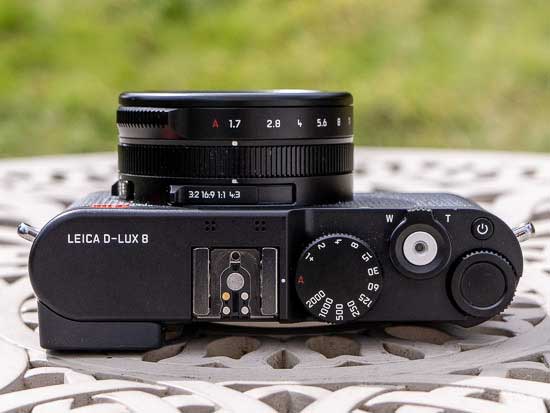


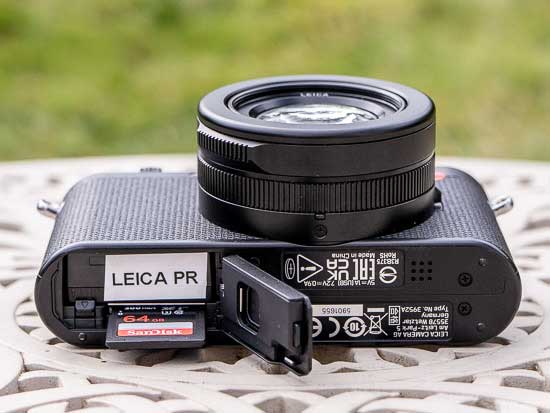
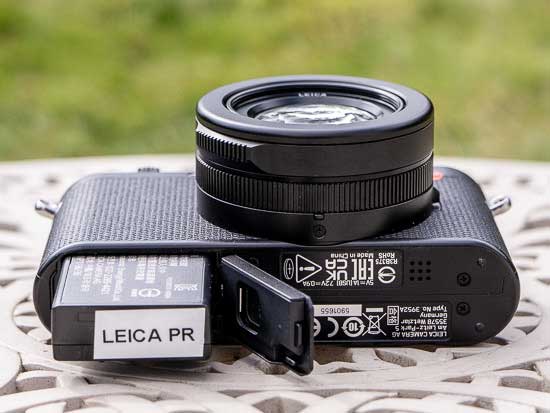
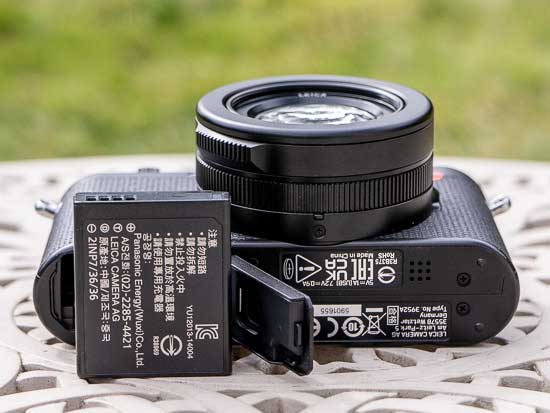

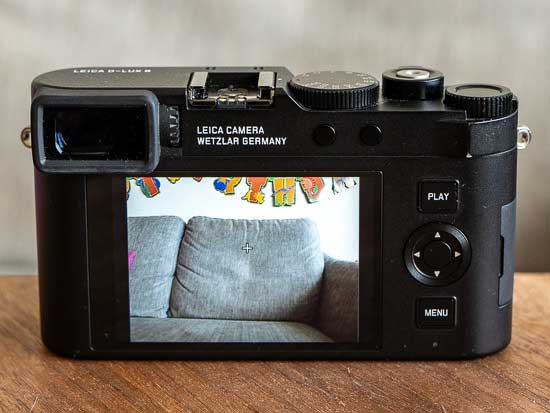
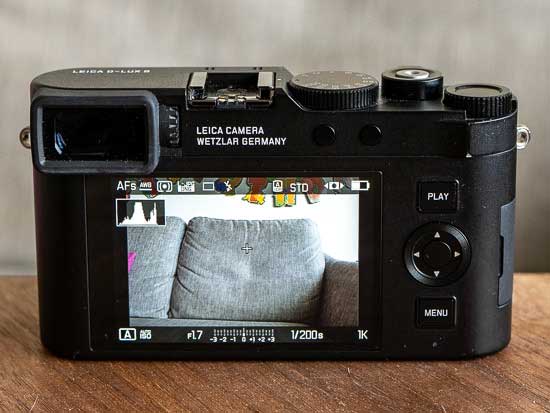

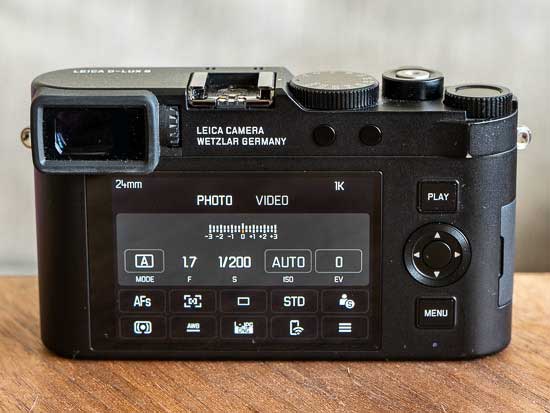
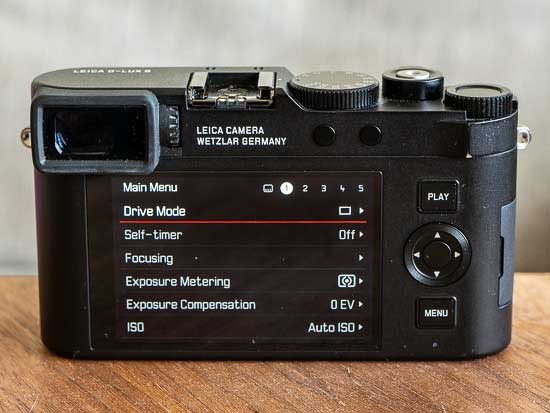
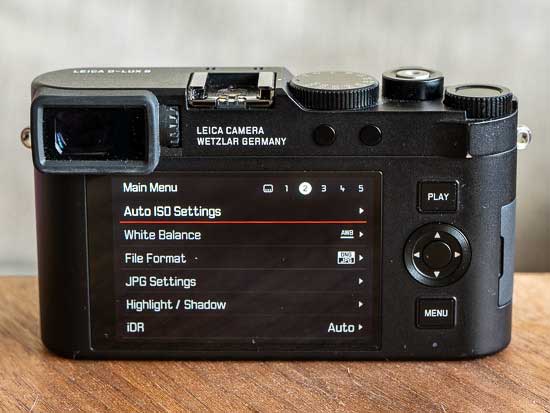
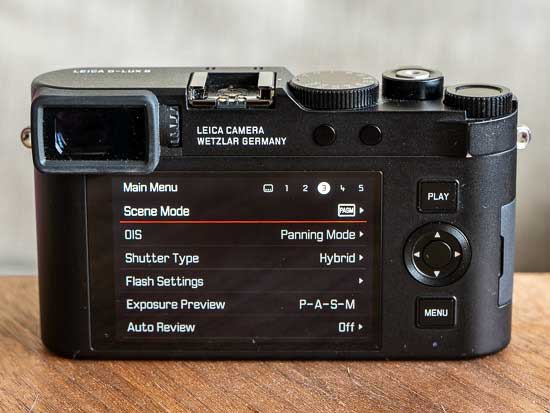

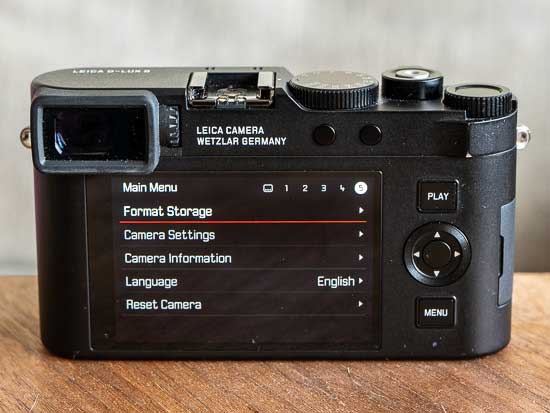
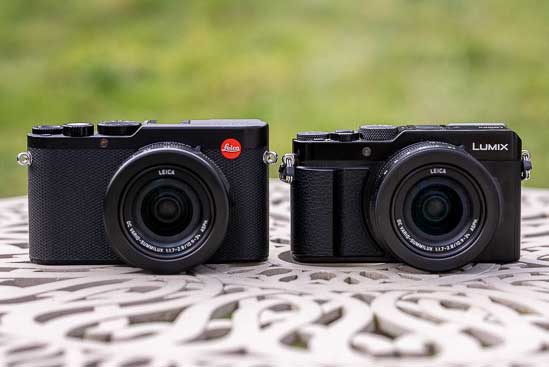
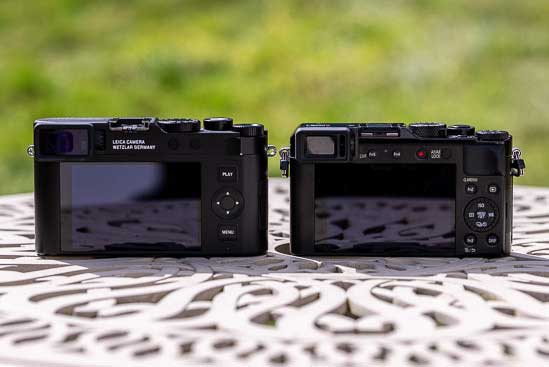
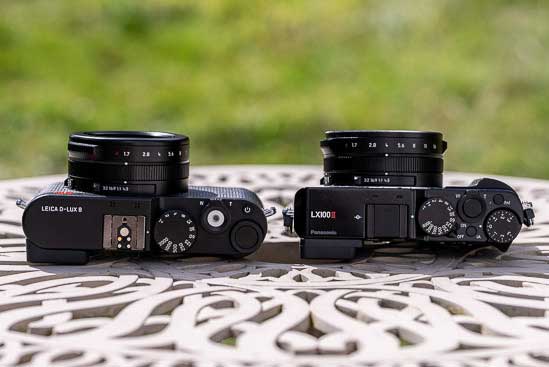


Conclusion
Leica have long had a close relationship with Panasonic where they’ve taken the latters’ compact cameras and produced their own take on them, but the D-Lux 8 is the first such model to feel like a truly unique Leica thanks largely to the adoption of the pared-back Q3 user interface.
Having said that, at its core the Dlux 8 is still a rather modest upgrade of what is after all a 6-year-old camera design, which was in turn a rather modest upgrade of the original Panasonic LX100 from 2014. So it’s fair to say that in many aspects the D-Lux 8 is looking rather dated in 2024 despite its cosmetic overhaul.
On the other hand, it’s commendable that Leica have invested any time at all developing their compact camera offering, in a market where you can count the number of compact cameras, never mind premium models, literally on one hand.
As the gateway to the Leica system, the £1450 / €1590 / $1595 D-Lux 8 will doubtless be seen by some buyers as a veritable bargain given how much the Q3 costs, whereas for more savvy, non-brand-loyal compact fans the near £$€500 price increase over the previous model will certainly be hard to justify.
We’re kind of on the fence ourselves. While it’s undoubtedly great to see the release of a high-end compact camera with a zoom lens, large sensor and proven Leica ergonomics, the D-Lux 8 still produces exactly the same stills and video quality as its predecessor whilst costing 30% more than the D-Lux 7 did at launch. Six years is certainly a long time, which goes some way to justifying the price increase but perhaps not the lack of technological advancements…
| Ratings (out of 5) | |
|---|---|
| Design | 4.5 |
| Features | 4 |
| Ease-of-use | 4 |
| Image quality | 4.5 |
| Value for money | 3 |
Main Rivals
Listed below are some of the rivals of the Leica D-Lux 8.
The new Canon PowerShot G5 X Mark II is a premium compact camera that’s clearly been re-designed to take on the all-conquering Sony RX100 series of cameras whilst offering some class-leading features of its own, including a longer zoom lens, touchscreen interface and bigger grip. Discover what’s new in our Canon PowerShot G5 X Mark II review, complete with full-size sample images and videos…

Canon’s PowerShot G7 X Mark III is a brand new compact camera that offers a lot of bang for your buck, for both stills photographers and vloggers alike. Find out just what the latest generation of this camera is capable of by reading our in-depth Canon PowerShot G7 X Mark III review, complete with full-size sample JPEG and Raw images…

The X100VI is the sixth generation of Fujfilm’s classic 35mm fixed lens premium compact camera series. It now has a 40 megapixel sensor, 6K video recording, in-body image stabilisation (IBIS) and brand new Reala Ace film simulation. Read our in-depth Fujifilm X100VI review now, complete with full-size sample images and videos…

The D-Lux 7 is Leica’s take on one of our favourite ever compact cameras, the Panasonic LX100 II, sporting a large Micro Four Thirds sensor and a versatile 3x zoom lens. Read our in-depth Leica D-Lux 7 review with sample photos and videos to find out if we rate it just as highly as the Lumix equivalent…

The Panasonic Lumix DMC-LX100 is a premium compact camera like no other. The LX100 features a large Micro Four Thirds sensor, 4K video recording, fast 24-75mm lens, class-leading electronic viewfinder, all in a camera that you can fit in a jacket pocket. Read our in-depth Panasonic Lumix DMC-LX100 review with sample JPEG, RAW and video files to find out just what this exciting new camera is capable of…

The Panasonic Lumix LX100 II is the successor to one of our favourite compact cameras of all time, the ahead-of-the-game LX100, which was launched way back in 2014. Read our in-depth Panasonic LX100 II review with sample JPEG, RAW and video files to find out if we rate it just as highly as the original…

The new GR III is a significant update of Ricoh’s popular GR premium compact camera series, offering a 28mm fixed focal length lens, 3-axis image stabilisation system, large 24 megapixel APS-C sensor, 1080/60p video recording, 3 inch LCD touchscreen, flash hotshoe, and built-in wifi and bluetooth connectivity. Read our in-depth Ricoh GR III review complete with full-size JPEG and RAW sample images to find out if this camera still has what it takes in 2019…

Sony’s venerable RX100 compact camera series has now reached its seventh iteration with the launch of the RX100 VII. What could Sony have possibly added to make this already excellent camera even better? Find out now by reading our in-depth Sony RX100 VII review, complete with a huge gallery of full-size sample images and videos.
Review Roundup
Reviews of the Leica D-Lux 8 from around the web.
The new Leica D-Lux 8 is a much-anticipated addition to the range, hailed as the missing entry model in the true Leica family. Its predecessor, worthy as it was, always suffered from suggestions that it was just a rebadged Panasonic. This criticism was unfair, of course, but there is no avoiding the fact that the appearance, control layout and menu options were more Lumix than Leica.
Read the full review »
So it makes perfect sense for companies such as Leica to essentially re-release older models to fill the demand in the market. Thus, the $1,595 D-Lux 8 has hit the shelves and I got to see if it has a place in 2024. The experience was fun for all the right reasons but came with a major case of deja vu.
Read the full review »
The compact Leica D-Lux 8 pairs a decently large sensor with a versatile zoom lens, but the camera’s focus and video tech feel dated.
Read the full review »
Specifications
| Camera type | Digital compact camera |
| Dimensions (WxHxD) | 130 x 69 x 62 mm |
| Weight | Approx. 397 g/357 g (with/without battery) |
| Sensor size | 4/3“ CMOS sensor, 21,77 MP/17 MP (total/effective) |
| Buffer |
DNG™: 14 or higher*, JPG: 100 or higher* *Based on CIPA standards and a memory card with high read/write speed. Capacity, depending on frame rate and picture format, estimated quantity (number of possible images in the buffer memory) |
| Storage medium | UHS-II (recommended), UHS-I, SD/SDHC/SDXC memory card |
| Material | Full metal housing: magnesium die-cast, leatherette covering |
| Lens | Leica DC Vario-Summilux 10.9–34 f/1.7–2.8 ASPH. (35 mm equivalent: 24–75 mm) aperture range: 1.7–16/2.8–16 (at 10.9/34 mm) |
| Lens filter thread | E43 |
| Aperture range | Depending on zoom level, F1.7 to F16 in 1⁄3 EV increments (wide angle) F1.7 to F16; (tele zoom) F2.8 to F16 in 1/3 EV increments |
| Operating conditions | 0°C to +40°C |
| Interfaces | ISO accessory shoe with additional control contacts for Leica flash units, HDMI jack Type D, USB 3.1 Gen 1 Type C |
| Tripod thread | A 1⁄4 DIN 4503 (1⁄4”) with stainless steel in the base |
| Image stabilization | Visual compensation system for photos and video recordings |
| Filter | RGB color filter, UV/IR filter |
| File formats | Photo: DNG™ (raw data), DNG + JPG, JPG (DCF 2.0, Exif 2.31) Video: MP4, H.264, AAC stereo |
| Photo resolution | |
| DNG™ | 16:9 – 5152 x 2904 (15 MP) 3:2 – 4928 x 3288 (16.2 MP) 4:3 – 4736 x 3552 (16.8 MP) 1:1 – 3552 x 3552 (12.6 MP) |
| L-JPG | 16:9 – 5152 x 2904 (15 MP) 3:2 – 4928 x 3288 (16.2 MP) 4:3 – 4736 x 3552 (16.8 MP) 1:1 – 3552 x 3552 (12.6 MP) |
| M-JPG | 16:9 – 3840 x 2160 (8.3 MP) 3:2 – 3504 x 2336 (8.2 MP) 4:3 – 3360 x 2520 (8.5 MP) 1:1 – 2528 x 2528 (6.4 MP) |
| S-JPG | 16:9 – 1920 x 1080 (2.1 MP) 3:2 – 2496 x 1664 (4.2 MP) 4:3 – 2368 x 1776 (4.2 MP) 1:1 – 1776 x 1776 (3.2 MP) |
| File size | |
| DNG™ | approx. 31 MB, depending on resolution and image content |
| JPG | depending on resolution and image content |
| Video | max. length: 29 min |
| Color depth | |
| DNG™ | 12 bit |
| JPG | 8 bit |
| Color space | Photo: sRGB |
| Video Resolution | |
| 4K | 3840 x 2160 |
| Full HD | 1920 x 1080 |
| HD | 1280 x 720 |
| Video frame rate/bit rate | |
| 4K 30 p | 29.97 fps – 4K 4:2:0 / 8 bit – h.264 L-GOP 100 Mbps |
| 4K 24 p | 23.98 fps – 4K 4:2:0 / 8 bit – h.264 L-GOP 100 Mbps |
| FHD 60 p | 59.94 fps – FHD 4:2:0 / 8 bit – h.264 L-GOP 28 Mbps |
| FHD 30 p | 29.97 fps – FHD 4:2:0 / 8 bit – h.264 L-GOP 20 Mbps |
| HD 30 p | 29.97 fps – HD 4:2:0 / 8 bit – h.264 L-GOP 10 Mbps |
| Viewfinder/LCD panel | |
| Viewfinder (EVF) | OLED, Resolution: 2,360,000 dots, 60 fps, magnification: 0.74x, at aspect ratio: 4:3, exit pupil position: 20 mm, setting range -4/+4 dpt, with eye sensor for automatic switchover between viewfinder and LCD panel, time delay 0.005 s |
| LCD panel | 3” TFT LCD, approx. 1,843,200 dots, 384 ppi, aspect ratio 3:2, touch panel |
| Shutter | |
| Shutter type | Mechanical central shutter or optional electronic shutter |
| Shutter speeds | Mechanical shutter: 60 s to 1⁄4000 s Electronic shutter function: 1 s to 1⁄16000 s |
| Shutter button | Two-stage (1st stage: Activation of the camera electronics including autofocus and exposure metering, 2nd stage: Taking the picture) |
| Self-timer | Delay time: 2 s or 12 s |
| Drive Mode |
Single , Interval Shooting , Exposure Bracketing Continuous shooting: |
| Focusing | |
| Focus range | 50 cm to ∞ With macro setting: from 3 cm (wide angle), from 30 cm (tele zoom) |
| Focus mode | Automatic, Automatic (macro), or Manual |
| Autofocus system | Contrast detection |
| Autofocus modes | Intelligent AF (autonomously selects AFs and AFc ), AFs , AFc |
| Autofocus metering methods | Spot (can be shifted), Field (can be shifted and scaled), Multi-Field , Zone (can be shifted), Eye / Face , Tracking |
| Autofocus metering fields | 49 |
| Exposure | |
| Exposure metering | TTL (exposure metering through the lens), with working aperture |
| Metering principle | Exposure metering is done by the image sensor for all exposure metering methods |
| Exposure metering methods | Spot , Center-Weighted , Multi-Field |
| Exposure modes | Program AE mode (P) Aperture-priority mode (A): manual aperture setting Shutter-priority mode (S): manual shutter-speed setting Manual (M): manual setting for shutter speed and aperture Various fully automatic variants ( Scene Mode ): Auto , Portrait , Landscape , Night Scenery , Miniature Effect , One Point Color , HDR |
| Exposure compensation | ±3 EV in 1⁄3 EV increments |
| Automatic bracketing | 3, 5 or 7 frames, graduations between shoots up to 1 EV, in 1⁄3 EV increments additional optional exposure compensation: up to ±3 EV |
| ISO sensitivity range | |
| Auto ISO | Photo ISO 100–ISO 25 000 | Video ISO 100–ISO 6 400 |
| Manual | Photo ISO 100–ISO 25 000 | Video ISO 100–ISO 6 400 |
| White balance | Automatic ( Auto ), default ( Daylight , Cloudy , Shadow , Tungsten , Flash ), manual metering ( Gray Card ), manual color temperature settings ( Color Temperature , 2500 K to 10000 K) |
| Flash | |
| Flash unit | Included in the delivery: Leica CF D |
| Flash angle | Aligned with the shortest focal length of the lens of 10.9 mm |
| Guide number | 10/7 (at ISO 200/100) |
| Flash range | Approx. 0.6–14.1 m/0.3–8.5 m (at shortest/longest focal length) |
| Flash unit connector | Via the accessory shoe |
| Flash sync time | : 1⁄4000 s, slower shutter speeds available |
| Flash exposure compensation | ±3 EV in 1⁄3 EV increments |
| Equipment | |
| Microphone | Stereo |
| Speaker | Mono |
| WLAN | WLAN function for connecting to the Leica FOTOS app. The Leica app is available from the Apple App Store™ or the Google Play Store™. IEEE802.11b/g/n Channel 1–11 (2412–2462 MHz), maximum output (e.i.r.p.): 5.9 dBm, encryption method: WLAN-compatible WPA™/WPA2™ |
| Bluetooth | Bluetooth 5.0 LE: Channel 0–39 (2402–2480 MHz), maximum output (e.i.r.p.): 1.2 dBm |
| GPS | Not available everywhere due to country-specific legislation; can be added via the Leica FOTOS app. Data is written to Exif header of the picture files. |
| Menu languages | English, German, French, Italian, Spanish, Portuguese, Russian, Japanese, Traditional Chinese, Simplified Chinese, Korean |
| Power supply | |
| Rechargeable battery (Leica BP-DC15) | Lithium-ion rechargeable battery, rated voltage: 7.2 V (DC), capacity: 1025 mAh (min.), manufacturer: Panasonic Energy (Wuxi) Co. Ltd., Made in China |
| Charging via USB | With camera switched off: 5 V/1500 mA (2.5 W or greater) |
| Rated values for input voltage/power | 7.2 V 0.9 A (battery), 5 V 1.0 A (USB) |
Your Comments
Credit : Source Post



